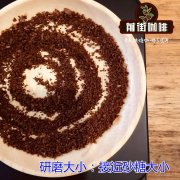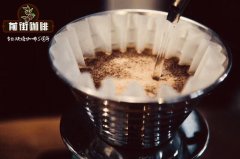How to make iced coffee by hand in the village of Nabusimac, Cesar, Colombia

Professional coffee knowledge exchange more coffee bean information please follow the coffee workshop (Wechat official account cafe_style)
Colombia has long been an amazing producer, with land stretching across the northern and southern hemispheres, cut by three main mountains: the western, central and eastern mountains, divided into valleys and hills, and rich in volcanic ash soil. to form a diverse and unique microclimate. The rainfall brought by the monsoon movement is the most important indicator affecting the coffee harvest in Colombia, with the exception of the southern province of Nalinglong (May-August) and the northerly province of Sisa (November-January). Other coffee producing areas in Colombia have two coffee harvesting seasons a year, making it possible to have a stable coffee export throughout the year, making it the second largest coffee exporter in the world.
Colombian Coffee Xisa Nabusmark Village Tibica 2000m washing
Columbia Cesar Nabusimaque Typica Washed
Producing area: Magdalena (Madalina), Cesar (Cesar)
Producer: small coffee farmers in the village of Nabashmark (Nabusimaque)
Variety: Tibica, Kaddura, Colombiana
Altitude: average 2000 m
Grade: Supremo (SC17+)
Treatment method: traditional washing treatment
Harvest time: 30% from April to June
September to January 70%
Flavor description: fruity, roasted walnut aroma, brown sugar, vanilla chocolate, fat feeling.
Nabusimaque is located in the Cesar mountains southeast of the Magdalena producing area, with an average elevation of 2000 meters and a large temperature difference between day and night, making it a good place for growing coffee. Nabusimaque is the former place where the Arawaku people in South America lived, and today it is a production group formed by 50 Indian Arawaku family coffee farmers. The Arawaku people benefit from the guidance and resources of the non-profit organization NPO, which not only teaches production technology, but also provides assistance such as washing production equipment and exporting coffee to improve its coffee flavor and quality year by year.
Introduction:
To the west of Colombia is the Andes, which is divided into three parts: the western, central and eastern mountains. The Cauca and Magdalena rivers flow along the Caribbean to the lowland plains. Colombia is currently the second largest coffee producer in the world, using washing to treat Arabica coffee beans. It is also one of the largest producers of high-quality coffee in the world. Traditional deep-roasted coffee has a strong and memorable flavor. Coffee was first introduced to Colombia in 1808, when it was brought by a priest from French Antilles via Venezuela. Today, the country is the third largest coffee producer after Brazil and Vietnam, with an annual output of 12 million bags of 60 kg each, while Brazil produces 31 million bags a year.
The status of coffee in Colombia can be seen in the following examples: all vehicles entering the country must be sprayed and sterilized so as not to inadvertently cause disease and damage coffee trees. Colombia was the world's last major exporter of Arabica coffee beans, second only to Brazil. Robusta coffee, however, is rarely grown. Compared with other producing countries, Colombia is more concerned about and developing new varieties and promoting production. It is this, coupled with its superior geographical environment and climatic conditions, that Colombian coffee is of high quality and delicious, and is famous all over the world.
The main producing areas are Huila (San Augustin), Narino, Tolima, Popayan (Cauca), Valle de Cauca, Meta, Antioquia (Medellin), Magdelena (Sierra Nevada), Boyaca, Santander (Bucaramanga) and so on. About 700 million coffee trees are documented in Colombia, 66% of which are planted in modern plantations and the rest in small, traditionally run farms. The main varieties include Kaddura Caturra, Colombia Colombia, Tibica Typica, Bourbon Bourbon, Elephant Bean Maragogype, and Tabi. Farms and cooperatives throughout the country, big or small, are distributed in more than 500000 municipalities and 14 major coffee-producing areas. A total of 2 million Colombians depend on coffee cultivation for a living, contributing 12.5 per cent to gross domestic product. Coffee production in the early 1960s was about 600kg per hectare, but now it has risen to about 900kg, with individual farms reaching 2500 kg. Colombia established the National Coffee Management Association in 1927, which is responsible for quality supervision. Although the association is a private organization, it acts on behalf of the government. In addition to organizing the industry, the association is also responsible for the control of coffee prices and responsible for health care, education, road construction, hiring planting technicians, conducting investigations, supervising product quality, and directly managing the export business of 50% of the total export volume. Hire marketing staff and other duties. Like the National Coffee Management Association in Kenya, it is a model for the management of coffee organizations.
How to make Colombian coffee [Sisana Bush Mark]?
Front street coffee hand flush reference: weigh 15g [Sissana Bushmark] coffee powder, pour into the grinder for medium grinding, the finished particles are slightly thicker than salt, we use BG bean grinder to scale 5R (standard sieve pass rate 60%), water temperature 89 degrees, V60 filter cup extraction, recommended powder water ratio around 1:15.
The hot water in the hand flushing pot draws a circle clockwise with the center of the filter cup. Start the time when brewing, brew the coffee to 30g in 15 seconds, then stop the water injection, and when the time is up to 1 minute, the second water injection. The second water injection is the same as before, draw a circle clockwise with the center of the filter cup, and the water flow should not rush to the place where the coffee powder is connected with the filter paper, so as not to produce channel effect.
Coffee powder to the outermost circle to set aside a circle, and then another circle to the middle, 2 minutes 20 seconds, to the coffee to 220g, brewing coffee is finished.
| Japanese ice hand punch [Sisana Bush Mark]
Front Street Coffee Ice hand [Sisana Bushmack] reference:
Colombian coffee [Sisana Bushmark], light and medium roasted, BG bean grinder scale 5m (standard sieve pass rate 67%)
20 grams of powder, 150 grams of ice, 150 grams of hot water. The water temperature is 90 ℃ higher than the recommended normal hand flush, then 1 ℃ higher, the normal grinding small Fuji 3.5 scale, the ice hand flushing is slightly smaller than half a grid-small Fuji 3 scale, the recommended powder (water + ice) ratio is 1:15.
The amount of steaming water is 40 grams and the steaming time is 30 seconds.
Water injection by stages, 60 grams of water in the first section and 40 grams of water in the second section. Use a thin but high water injection column and stir hard to make the coffee powder fully tumble, but be careful that the water level is not too high and do not rush to the edge of the filter paper.
The whole extraction time is about two and a half minutes (close to the normal extraction time of 20 grams of powder).
END
Important Notice :
前街咖啡 FrontStreet Coffee has moved to new addredd:
FrontStreet Coffee Address: 315,Donghua East Road,GuangZhou
Tel:020 38364473
- Prev

Columbia perfect Manor Arabica Mother Coffee tastes good? what is Arabica Mother?
Professional coffee knowledge exchange more coffee bean information please follow the coffee workshop (Wechat official account cafe_style) there is a coffee variety in the world that is rare, the output is rare, the price is expensive, people who have drunk it will say that it doesn't taste like coffee at all, people around the world use such words to describe it, such words as milk cereal, peach juice, black rice tea, purple potato ice cream, rose-flavored cow.
- Next

Columbia Secret Garden hand-brewed Coffee suggestion _ how to make Colombian coffee beans by hand
Professional coffee knowledge exchange more coffee bean information please follow coffee workshop (Wechat official account cafe_style) Colombian Coffee-Secret Garden Colombia Alma del Cafe de Jardin country of Origin: Colombian region: Antioquia Management Factory: Empresas de Antioquia Secret Garden and other levels: Supremo,Screen17 / 18 processing
Related
- Detailed explanation of Jadeite planting Land in Panamanian Jadeite Manor introduction to the grading system of Jadeite competitive bidding, Red bid, Green bid and Rose Summer
- Story of Coffee planting in Brenka region of Costa Rica Stonehenge Manor anaerobic heavy honey treatment of flavor mouth
- What's on the barrel of Blue Mountain Coffee beans?
- Can American coffee also pull flowers? How to use hot American style to pull out a good-looking pattern?
- Can you make a cold extract with coffee beans? What is the right proportion for cold-extracted coffee formula?
- Indonesian PWN Gold Mandrine Coffee Origin Features Flavor How to Chong? Mandolin coffee is American.
- A brief introduction to the flavor characteristics of Brazilian yellow bourbon coffee beans
- What is the effect of different water quality on the flavor of cold-extracted coffee? What kind of water is best for brewing coffee?
- Why do you think of Rose Summer whenever you mention Panamanian coffee?
- Introduction to the characteristics of authentic blue mountain coffee bean producing areas? What is the CIB Coffee Authority in Jamaica?

